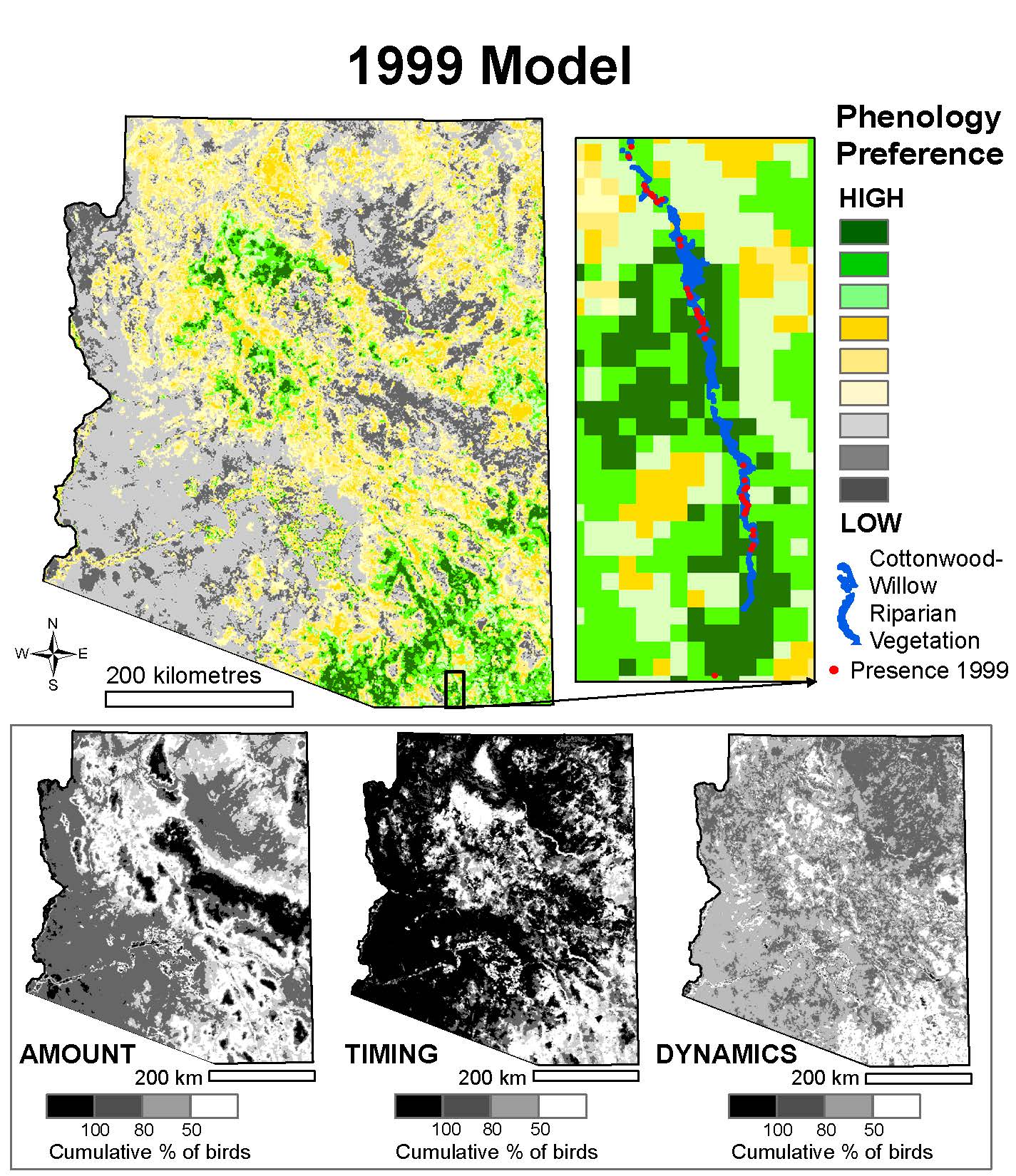Research reveals that the western yellow-billed cuckoo (Coccyzus americanus occidentalis), a candidate for listing as an endangered species, is picky when choosing a location to build its nest. USGS scientists examined the land surface phenology captured by satellite data within cottonwood-willow riparian vegetation, a critical nesting habitat type for the cuckoo in Arizona. They discovered cuckoos preferentially select areas that experience peak greenness 29 days later, are 36% more dynamic, and slightly (less than 1%) more productive than average cottonwood-willow habitat. The greenness was determined using Advanced Very High Resolution Radiometer (AVHRR) Normalized Difference Vegetation Index (NDVI) data processed as 14-day maximum value composites with 1 km spatial resolution. Although the spatial resolution is coarse, the high contrast between the dense vegetation of the riparian corridors and the sparse vegetation of the surrounding desert make these data suited for studying the landscape dynamics of the cuckoo habitat. Below is the reference to the journal article detailing this research. The results suggest cuckoos migrate northward, following the greening of riparian corridors and surrounding landscapes in response to monsoon precipitation, but then select a nesting site based on optimizing the near-term foraging potential of the neighborhood. The identification of preferred phenotypes within recognized habitat can be used to refine habitat models and guide management actions by, for example, identifying and prioritizing for conservation those landscapes that reliably and consistently exhibit highly preferred phenometrics.
Wallace, C.S.A., Villarreal, M.L., and van Riper, C., III, 2013, Influence of monsoon-related riparian phenology on yellow-billed cuckoo habitat selection in Arizona: Journal of Biogeography, v. 40, p. 2094–2107.
http://onlinelibrary.wiley.com/doi/10.1111/jbi.12167/abstract

Statistical tests revealed yellow-billed cuckoo occupy locations within their preferred riparian habitat that exhibit peak greenness after the start of the summer monsoon and are overall significantly greener and more dynamic than “average” habitat. The model shown here for 1999 reflects these findings, mapping areas with “later-greener-dynamic” phenology.

